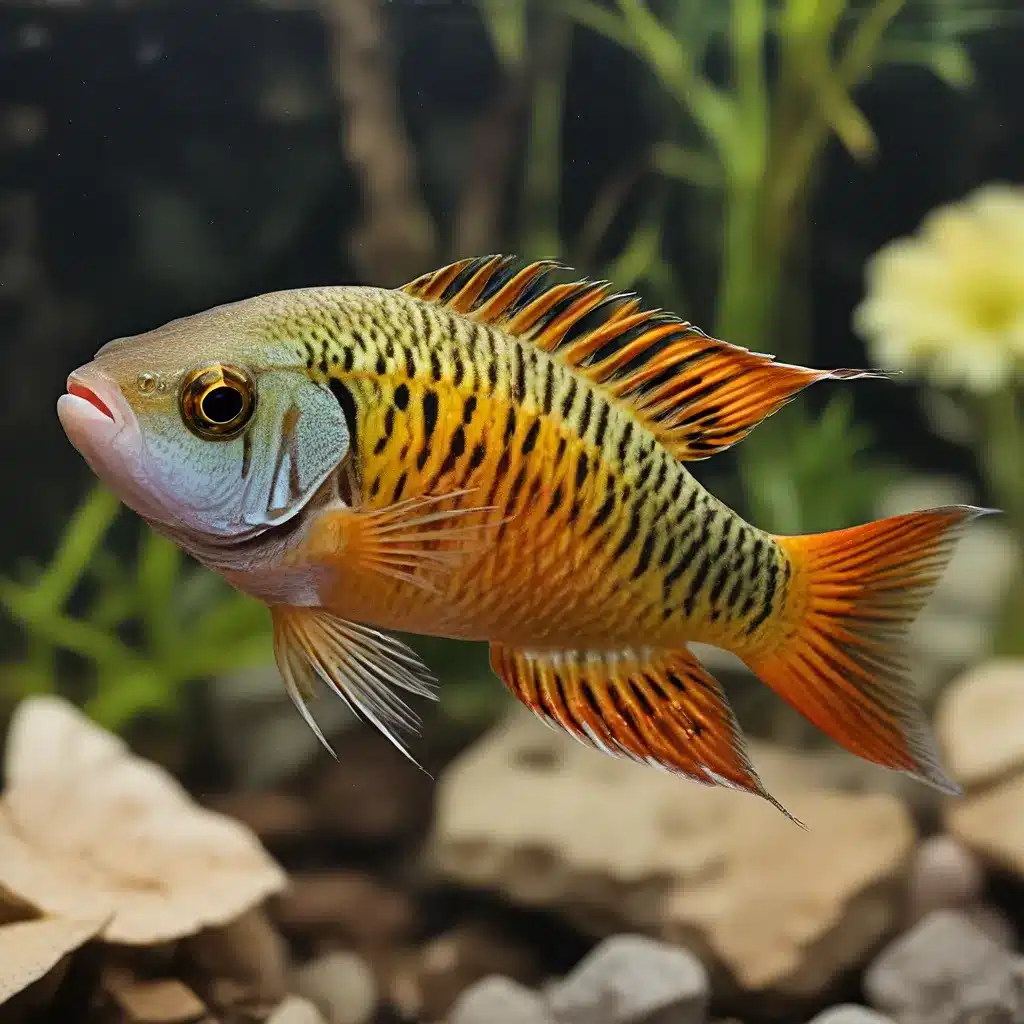
The Allure of Apistogramma: Embracing the Beauty of Diminutive Wonders
In the vast aquarium hobby landscape, where flashy, vibrant fish often command the spotlight, there exists a captivating group that has quietly stolen the hearts of many enthusiasts – the Apistogramma, or dwarf cichlids. These diminutive marvels, with their intricate color patterns and engaging behaviors, offer a unique charm that transcends the traditional notions of aquarium fish. As we delve into the world of Apistogramma, we’ll uncover the secrets to successfully caring for these delightful dwarf cichlid gems and explore why they’ve become such beloved members of the aquarium community.
Mastering the Art of Apistogramma Care
Keeping Apistogramma thriving in the confines of an aquarium requires a delicate balance of environmental factors and attentive husbandry. These charismatic fish thrive in well-planted, dimly-lit aquariums that mimic their natural habitat in the Amazon Basin. King Aquarium recommends crafting a captivating biotope that incorporates lush vegetation, driftwood, and a substrate composed of fine gravel or sand. This carefully curated setting not only provides visual interest but also caters to the unique needs of these diminutive cichlids.
Water Parameters: Apistogramma are sensitive to water quality and require pristine conditions to thrive. Aim for a slightly acidic pH between 6.0 and 7.0, with soft to medium-hard water hardness. Temperature should be maintained between 72°F and 82°F, with consistent stability being of utmost importance.
Aquarium Size and Stocking: While Apistogramma may be small in size, they are territorial and require ample space to establish their dominance hierarchies. A minimum tank size of 20 gallons is recommended, with a preferred stocking ratio of one male to two or three females. This arrangement not only allows for the natural social dynamics to unfold but also minimizes aggressive behavior within the group.
Feeding and Nutrition: Apistogramma are omnivorous, with a diet that should consist of a balanced blend of high-quality flakes, pellets, frozen foods, and live prey. Offer a varied menu that includes brine shrimp, daphnia, bloodworms, and quality algae-based foods to ensure their nutritional needs are met. Avoid overfeeding, as this can lead to water quality issues and potential health problems.
Unveiling the Fascinating Behavioral Traits of Apistogramma
Apistogramma are not only visually stunning but also captivating to observe due to their intricate social behaviors and fascinating breeding habits. These dwarf cichlids are known for their distinct courtship displays, with males showcasing their vibrant colors and engaging in intricate dance-like movements to attract potential mates.
Social Dynamics: Apistogramma are generally peaceful within their own species, but males can be territorial and may engage in occasional skirmishes to establish dominance hierarchies. Careful tank setup and stocking can help mitigate these occasional conflicts and foster a harmonious community.
Breeding Behavior: Breeding Apistogramma can be a rewarding and captivating experience for aquarists. Females will often lay their eggs in caves, crevices, or even within dense plant growth, and the parents will diligently care for the fry, providing protection and dispersing food through their movements.
Fry Care: Raising Apistogramma fry can be a delicate task, as they require specialized care and feeding. Providing ample hiding spaces, dim lighting, and a nutrient-rich diet of infusoria, micro-worms, and powdered foods will ensure the successful rearing of these diminutive offspring.
Embracing the Diversity of the Apistogramma Genus
The Apistogramma genus boasts an impressive array of species, each with its own unique characteristics and care requirements. From the boldly patterned Apistogramma cacatuoides to the subtly hued Apistogramma borellii, the diversity within this genus offers aquarists a wide range of options to choose from, catering to various aesthetic preferences and skill levels.
Researching Species-Specific Needs: Before adding an Apistogramma to your aquarium, it’s crucial to research the specific care requirements of the species you’re interested in. Some may have more specialized needs, such as higher water flow or particular substrate requirements, and understanding these nuances will ensure the long-term success of your dwarf cichlid community.
Ideal Tankmates: Apistogramma are generally peaceful and can be kept with a variety of non-aggressive fish species, such as tetras, corydoras catfish, and peaceful rasboras. Avoid pairing them with aggressive or large-bodied fish that may intimidate or harass the diminutive cichlids.
Aquascaping Considerations: The captivating beauty of Apistogramma is often enhanced when their habitat is thoughtfully designed. Incorporating dense plant growth, driftwood, and varied substrate textures can create a visually striking aquascape that caters to the natural behaviors and preferences of these charming dwarf cichlids.
Unlocking the Secrets of Apistogramma Success
Keeping Apistogramma thriving in the aquarium setting requires a combination of patience, attentive care, and a deep appreciation for their unique needs. By replicating the natural habitats of these diminutive wonders, providing stable water parameters, and catering to their social and breeding behaviors, aquarists can unlock the secrets to successfully maintaining a vibrant and captivating Apistogramma community.
Whether you’re a seasoned enthusiast or a newcomer to the aquarium hobby, the allure of Apistogramma is undeniable. These dwarf cichlid gems offer a mesmerizing glimpse into the wonders of the aquatic world, inviting us to slow down, observe, and immerse ourselves in the captivating charm that these diminutive marvels possess. By embracing the art of Apistogramma care, you’ll not only cultivate a thriving aquatic ecosystem but also unlock a deeper appreciation for the diverse and fascinating inhabitants that make the aquarium hobby so truly captivating.

